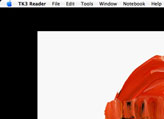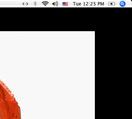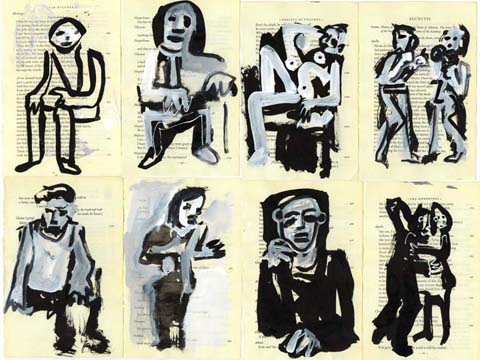Last week, the Pew Internet & American Life Project released a study on blogging. The findings describe the characteristics of the blogging community. The ways blogging as a communication tool supports public speech are gaining clarity and support through this study. It estimates that 12 million people in the US are blogging. Bloggers, as compared to internet users, are more ethnically diverse, younger and highly wired. Further, an important aspect is that the majority of bloggers (54%) has never published media before they started blogging. 37% of bloggers report that they post about personal experiences, the largest response for that question. Not surprisingly, bloggers read blogs, and there is a direct correlation between the frequency of a blogger’s posting and how often she read blogs. The growth of blogging will become more important as it is encouraging the roles of reader and writer to merge. We’ve discussed this merger before, but it is great to have numbers to support the discussion.
As internet users are becoming authors and publishers, I am curious to watch the future development of bloggers as a community and the possible impact they can have on policy issues. Is there the opportunity for bloggers to become a vehicle for social change, especially on Internet issues? 12 million bloggers could demand the attention of legislators and courts on the issues of net neutrality, copyright, privacy and open access. Although, as we have discussed in the past, the blogosphere is often a partisan space. The Pew study also confirms its diversity. Therefore, mobilizing this community is a challenging task. However, the sheer number of bloggers foretells that some of them are bound to find themselves dealing with these issues, especially with copyright and intellectual property. My hope then would be that these inevitable frictions would bring further into the mainstream these issues and broaden the discussion by the often one-sided debates of the telecommunications industry and media conglomerates.
Author Archives: bob stein
what would susan sontag make of flickr?
This post takes a bit of a set-up. Six times over the past twelve years (including the last four) I’ve had the lucky opportunity to spend a bit of the summer on the northeast coast of Sardinia. The place is filled with contradictions. The landscape is arid, almost desert-like, yet it merges effortlessly with the sea. The gentle wind, lapping waters and sublime beauty disguise a harsh reality–the rocks on land and sea are sharp and unforgiving of error. The stone on the land is red granite but THE rock, the 2 mile long, nearly one-mile high island that dominates the seascape is uncharacteristically made of limestone. There is no electricity except in the kitchen and workshop. We live in concrete-floor huts down by the water. We are always aware of nature here — both its beauty and its danger. For reasons too complicated to go into now, I am also acutely aware of differences of class and race here. The overall effect of these contradictions is that I am extremely conscious of where I am and how lucky I am to be here.
The other day I read John Berger’s 1978 essay, “The Uses of Photography,” in which he reflects upon the ideas in Susan Sontag’s seminal book, On Photography.
Berger quotes Sontag:
A capitalist society requires a culture based on images. It needs to furnish vast amounts of entertainment in order to stimulate buying and anaesthetize the injuries of class, race and sex. And it needs to gather unlimited amounts of information, the better to exploit the natural resource, increase productivity, keep order, make war, give jobs to bureaucrats. The camera’s twin capacities, to subjectivise reality and to objectify it, ideally serve these needs and strengthen them. Cameras define reality in the two ways essential to the workings of an advanced industrial society: as a spectacle (for masses) and as an object of surveillance (for rulers). The production of images also furnishes a ruling ideology. Social change is replaced by a change in images.
Then he raises the question of whether there is a new way to conceive of the social purpose and practice of photography:
Her theory of the current use of photographs leads one to ask whether photography might serve a different function. Is there an alternative photographic practice? The question should not be answered naively. Today no alternative professional practice (if one thinks of the profession of photographer) is possible. The system can accommodate any photograph. Yet it may be possible to begin to use photographs according to a practice addressed to an alternative future.
. . . . For the photographer this means thinking of her or himself not so much as a reporter to the rest of the world but, rather, as a recorder for those involved in the events photographed [emphasis added]. The distinction is crucial.
The passage in bold above hit me like a ton of bricks. The midday meal here is the important one. The guests and staff eat together on a shaded platform looking out at the island described above (think Ayres Rock rising out of the water rather than planted in the desert). The recipes are local; the ingredients almost all grown on the property or caught in the sea at our doorstep. The result is about as perfect as a meal can be — completely in synch with time and place. I’ve made it a habit each day to photograph the food as it is laid out buffet style. I do this for myself but also for “foodie” friends back home. After reading Berger’s note above I realized how wrong-headed this “reportage” has been. My photographs of beautifully prepared food do not include any hint of the effort required to grow and prepare it, the sublime surroundings in which both staff and guests eat together, or the feelings of well-being that the experience engenders in us all. [I know that last sounds self-justifying or at the least absurdly naíve, but for now you’ll have to accept my sense that even the most well worked out social hierarchies, can under certain conditions and at certain moments turn into their opposite.]
Berger goes on to suggest that key to a new photographic practice is the construction of context:
The alternative use of photographs which already exist leads us back once more to the phenomenon and faculty of memory. The aim must be to construct a context for a photograph, to construct it with words, to construct it with other photographs, to construct it by its place in an ongoing text of photographs and images.
Photographs, at least those which intend to “report” preserve an instant in an ocean of time and therefore Berger contend they require context to give them meaning.
Which in turn brings me to the question of this post which I very much hope some of you will chime in on — what would Susan Sontag have made of Flickr? Originally, it seems, Flickr was conceived simply as a personal repository of images. In that sense it provides no antidote to the current practice of photography. However, as it begins to grow into a social network, where individuals begin to provide context and meaning to images, is it possible that Flickr could be a step to a new practice of photography. If so, what sorts of functionality need to be developed for Flickr and other related tools?
sophie is well
Yesterday’s post about MediaCommons has generated a number of questions about the whereabouts of “Sophie,” the new environment for digital writing and reading that the institute is working on. I’m delighted to report we are holding an introductory session in LA on august 14/15 for a group of professors that will be using Sophie on several campuses this fall. we’ll be putting up a website, specifically for Sophie in time for a soft public launch in September for anyone who wants to download and use it.
a bone-chilling message to academics who dare to become PUBLIC intellectuals
Juan Cole is a distinguished professor of middle eastern studies at the University of Michigan. Juan Cole is also the author of the extremely influential blog, Informed Comment which tens of thousands of people rely on for up-to-the-minute news and analysis of what is happening in Iraq and in the middle east more generally. It was recently announced that Yale University rejected Cole’s nomination for a professorship in middle eastern studies, even after he had been approved by both the history and sociology departments. As might be expected there is considerable outcry, particularly from the progressive press and blogosphere criticizing Yale for caving in to what seems to have been a well-orchestrated campaign against Cole by the hard-line pro-Israel forces in the U.S.
Most of the stuff I’ve read so far seems to concentrate on taking Yale’s administration to task for their spinelessness. While this criticism seems well-founded, I think there is a bigger issue that isn’t being addressed. The conservatives didn’t go after Cole simply because of his political ideas. There are most likely people already in Yale’s Middle Eastern studies dept. with politics more radical than Cole’s. They went after him because his blog, which reaches out to a broad general audience is read by tens of thousands and ensures that his ideas have a force in the world. Juan once told me that he’s lucky if he sells 500 copies of his scholarly books. His blog however ranks in the Technorati 50 and through his blog he has also picked up influential gigs in Salon and NPR.
Yale’s action will have a bone-chilling effect on academic bloggers. Before the Cole/Yale affair it was only non-tenured professors who feared that speaking out publicly in blogs might have a negative impact on their careers. Now with Yale’s refusal to approve the recommendation of its academic departments — even those with tenure must realize that if they dare to go outside the bounds of the academy to take up the responsibilities of public intellectuals, that the path to career advancement may be severely threatened.
We should have defended Juan Cole more vigorously, right from the beginning of the right-wing smear against him. Let’s remember that the next time a progressive academic blogger gets tarred by those who are afraid of her ideas.
inanimate alice

My friend Sue Thomas sent me a link to work by an artist going by the name of Babel. The first piece I looked at, Inanimate Alice is a wonderful throwback to early interactive media work which mixed audio, video, text and images in simple ways but to powerful effect. Josh Feldman’s Consciousness, Amanda Goodenough’s charming Inigo and Faithful Camel stories, Rodney Greenblatt’s Wonder Window, and Eric Swenson’s notorious BLAM! come immediately to mind. (Looked for links to online versions of these works but didn’t find any — not surprising since they are 14-19 years old. I Think I’ll write the authors and try to assemble an online exhibit of some of this early work. ) If you like Inanimate Alice and know of similar work (past or present) please send us a reference.
wikipedia — mainstream media sighting
In his op-ed piece today, NY Times columnist, Paul Krugman, quotes from the Wikipedia to define conspiracy theory:
A conspiracy theory, says Wikipedia, “attempts to explain the cause of an event as a secret, and often deceptive, plot by a covert alliance.”
This is the first time I’ve seen the Wikipedia used as an authoritative reference in the Times or any other major media outlet.
what’s the question? shifting the debate about google
A federal judge said Tuesday he intends to require Google Inc. to turn over some information to the Department of Justice . . .
progressive people are likely to defend Google against the encroachment of the govt. however, while i am in complete agreement with the sentiment that Google shouldn’t be giving information to the government about what people search for, i think the debate needs to be shifted in a dramatically different direction. the really important question (for the long term health of society) isn’t “should Google have to surrender information to this or any other government” but “why should Google have such sensitive information in the first place?”
if Google’s goal were simply as they say “to organize the world’s information and make it universally accessible and useful” then there really wouldn’t be a rationale for collecting information on what individuals search for. in reality of course, Google’s “reason for being” is to deliver people to advertisers and thus the need to collect all that data about us.
try this for a thought experiment. if Google continues to collect “all the world’s information” how long will it be before Google is indistinguishable from “God.” do we really want to give this much power to a private corporation whose first allegiance is to shareholders rather than the body politic?
what i can’t figure out is: why isn’t there a movement to develop a nonprofit, open source search engine? we have mozilla, we have wikipedia, we have linux. where is the people’s search engine? isn’t it time?
post-doc fellowships available for work with the institute
The Institute for the Future of the Book is based at the Annenberg Center for Communication at USC. Jonathan Aronson, the executive director of the center, has just sent out a call for eight post-docs and one visiting scholar for next year. if you know of anyone who would like to apply, particularly people who would like to work with us at the institute, please pass this on. the institute’s activities at the center are described as follows:
Shifting Forms of Intellectual Discourse in a Networked Culture
For the past several hundred years intellectual discourse has been shaped by the rhythms and hierarchies inherent in the nature of print. As discourse shifts from page to screen, and more significantly to a networked environment, the old definitions and relations are undergoing unimagined changes. The shift in our world view from individual to network holds the promise of a radical reconfiguration in culture. Notions of authority are being challenged. The roles of author and reader are morphing and blurring. Publishing, methods of distribution, peer review and copyright — every crucial aspect of the way we move ideas around — is up for grabs. The new digital technologies afford vastly different outcomes ranging from oppressive to liberating. How we make this shift has critical long term implications for human society.
Research interests include: how reading and writing change in a networked culture; the changing role of copyright and fair use, the form and economics of open-source content, the shifting relationship of medium to message (or form to content).
if you have any questions, please feel free to email bob stein
this is exciting.
every once in a while we see something that quickens the pulse. Jefferson Han, a researcher at NYU’s Computer Science Dept. has made a video showing a system which allows someone to manipulate objects in real time using all the fingers of both hands. watch the video and get a sense of what it will be like to be able to manipulate data in two and someday three dimensions by using intuitive body gestures.
artist as blogger
last spring we invited Alex Itin to be our first artist-in-residence at the institute. i first met Alex in the fall of 2000, during an art festival in Dumbo. he was set-up in a gallery painting portraits on pages of used books. i quite liked the paintings and got the perverse idea that it would be interesting to encourage someone who was using books in this way to work on an electronic book. i was working at Night Kitchen at the time. we had just released the beta version of TK3, the software we made for authoring and reading media rich electronic books. we lent Alex a Mac and he made his first electronic piece, Zoodoo – a series of paintings done on paperback pages which accompanied a beautiful Amiri Baraka poem. (if you first install the free TK3 Reader you can download Zoodoo from this page.) Alex kept experimenting and over time began animating the surface of his scanned-in paintings. while there has been a long history of filmmakers who painted on the surface of film, Alex was perhaps one of the first painters to integrate video into his paintings.
 |  | |
 |  | |
| From “Self Portait” by Alex Itin | ||
as a condition of his artist-in-residency we asked Alex to keep a blog in which we hoped he would write about his work as he did it. we were amazed after a few days to realize that alex was beginning to use the blog not as a way to talk about his work, but rather it was just another venue for his work. at first Alex posted paintings, drawings and photos sometimes with a text commentary. after a while he started to include animated gifs and sound. although the artist-in-residency ended almost a year ago, alex has been keeping up the blog. in fact, he’s been on a creative tear the past few weeks. check out the last two entries — the “thousand year crane” (be sure to start the music track) and the Chinese new year tree.
(disclaimer: i’ve been collecting Alex’s work for six years now, so my interest in his success is not purely altruistic)

